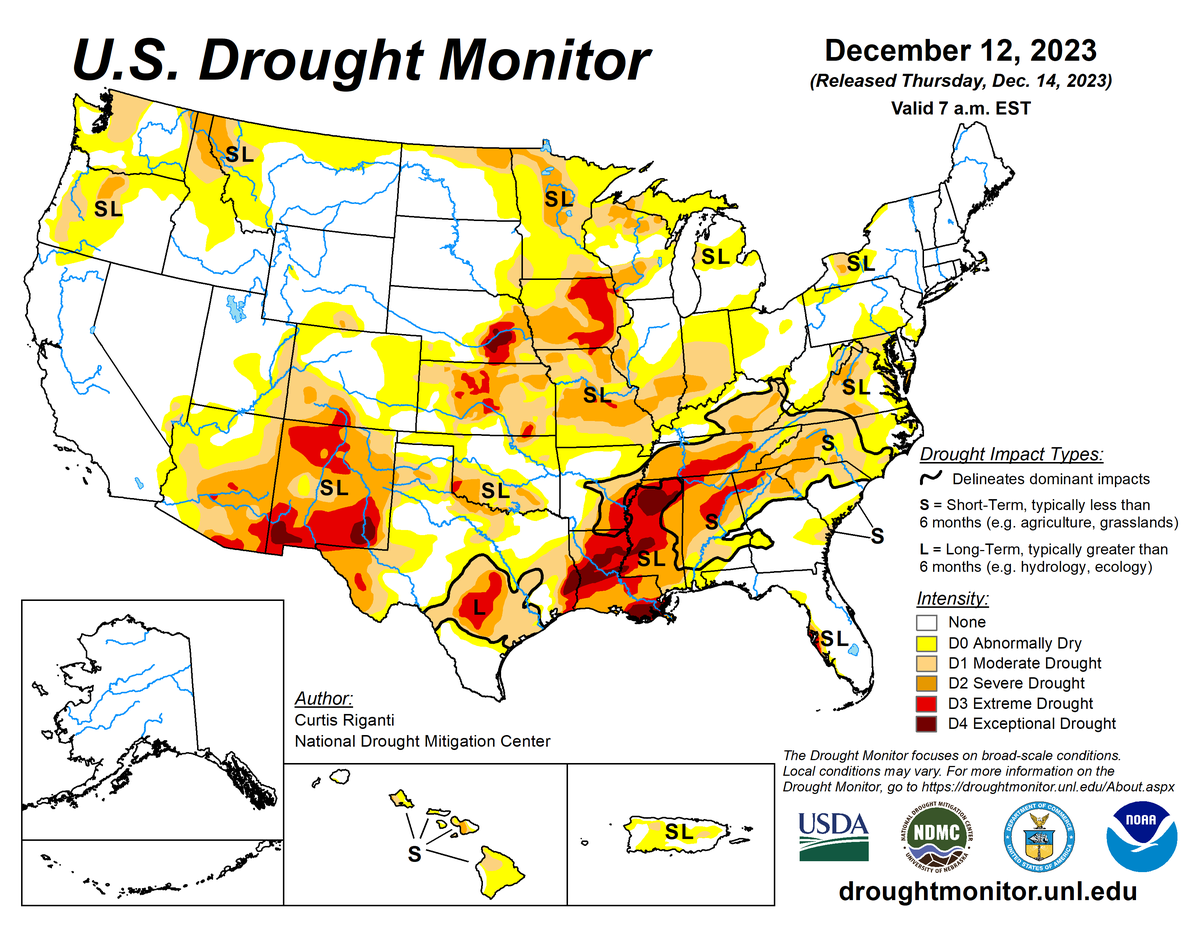
According to the December 12, 2023 U.S. Drought Monitor, moderate to exceptional drought covers 28.1% of the United States including Puerto Rico, a decrease from last week’s 28.9%. The worst drought categories (extreme to exceptional drought) decreased from 6.2% last week to 5.3%.
A couple Pacific weather systems moved in the westerly flow across the contiguous U.S. during this U.S. Drought Monitor week (December 6–12). In the upper-level atmospheric circulation, troughs were associated with the Pacific weather systems with ridges ahead and behind them. When averaged over the week, the circulation pattern consisted of a trough over the eastern contiguous U.S. with a ridge over the West. The ridge dominated the overall circulation, so temperatures averaged warmer than normal across most of the contiguous U.S., especially in the northern Plains.
Only parts of New England and the Southeast averaged cooler than normal. Cold fronts and surface low pressure systems were associated with the Pacific systems, with the storm track keeping mostly to the northern states. An atmospheric river gave the Pacific Northwest above-normal precipitation, the northerly storm track produced above-normal precipitation over parts of the northern and central Rockies and northern Plains, and a cold front tapped Gulf of Mexico and Atlantic moisture to spread above-normal precipitation over much of the eastern contiguous U.S. from the Appalachians to East Coast. But dry weather dominated the Southwest, most of the Plains, and the Mississippi Valley to Great Lakes, thanks to the dominant ridge.
Drought or abnormal dryness contracted or was reduced in intensity over parts of the Pacific Northwest, central Rockies, and Gulf Coast to Mid-Atlantic where precipitation fell this week, and in parts of Hawaii due to last week’s Kona rains. Drought or abnormal dryness expanded or intensified in areas that have seen persistently dry conditions, especially from parts of the southern Plains to Great Lakes. Nationally, contraction was more than expansion, so the nationwide moderate to exceptional drought area decreased this week.
Abnormal dryness and drought are currently affecting over 146 million people across the United States including Puerto Rico—about 47.1% of the population.

The full U.S. Drought Monitor weekly update is available from Drought.gov.
In addition to Drought.gov, you can find further information on the current drought as well as on this week’s Drought Monitor update at the National Drought Mitigation Center
The most recent U.S. Drought Outlook is available from NOAA’s Climate Prediction Center and the U.S. Department of Agriculture provides information about the drought’s influence on crops and livestock.
For additional drought information, follow #DroughtMonitor on Facebook and Twitter.



